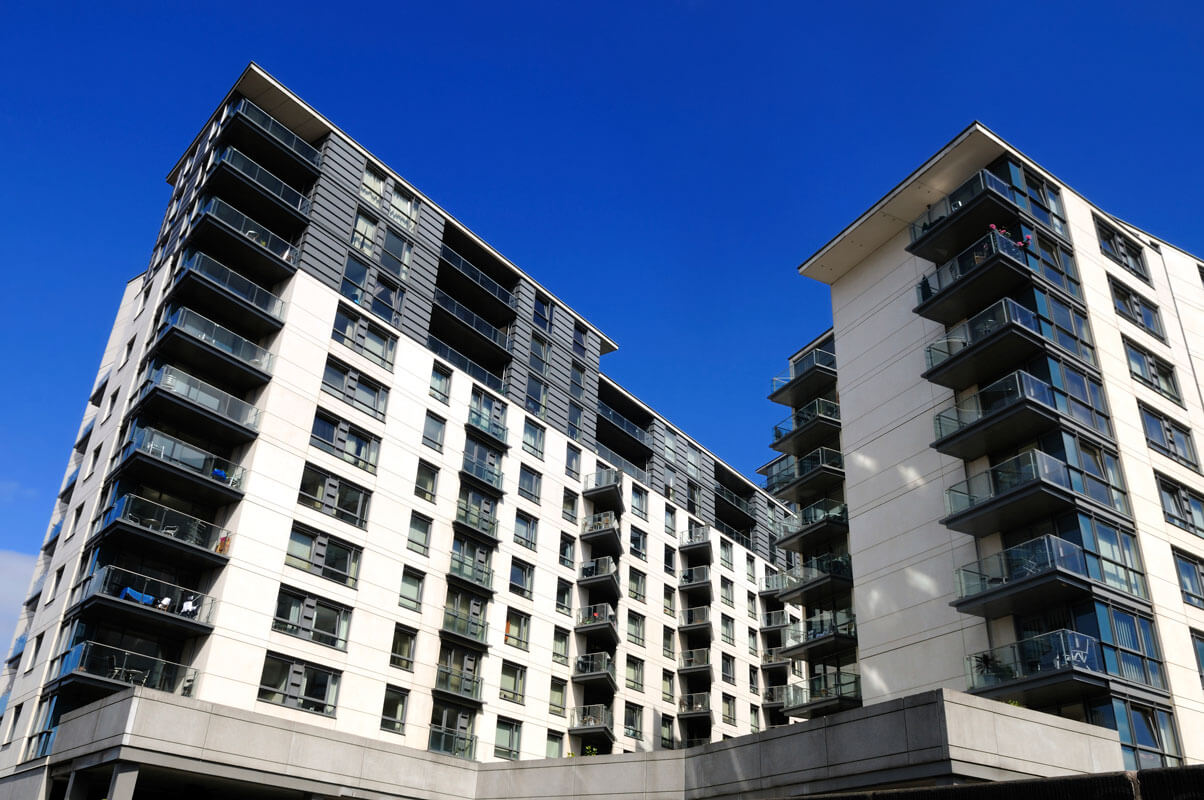Modular construction (or OSM) in the social housing sector is still struggling to establish itself as a viable option to be rolled out and live up to its promise of producing cheaper, quicker and better quality buildings to meet the challenge of 300,000 new homes a year.
The most significant stumbling block could be said to be the lack of funding for RPs who are seeking to charge these units, using the loans to pay for the construction of further units, which would then, ideally, be charged as security to support further construction, in a well-established cycle.
Why are funders not lending?
Funders are concerned that their security may not be sufficiently robust, long-lasting and ultimately saleable on enforcement, essentially being a depreciating asset unlike tried and tested traditional methods.
What could change their minds?
The closer the modular experience can get to being a familiar charging experience, the more confidence the funders will have in lending to the sector and kick-starting the cycle. The Ministry of Housing, Communities and Local Government, with one eye on the 300,000 target, have sponsored a working group led by Mark Farmer consisting of representatives of the big players in the industry, from warranty providers, insurers, lenders, and housebuilders, including Homes England NHBC, RICS, Legal & General, Barratts and Lloyds Bank plc (officially the “MHCLG MMC
Working Group”) to work out how they propose to promote OSM. Its overarching aim is to “enable demand led change that underpins increased capacity to build more homes in a more productive way to a higher quality”.
The Working Group wants to encourage manufacturers to invest in an OSM future in uncertain times, basically the title of Mark Farmer’s report “Modernise or Die”. Whilst the recommendations have been delayed and are now expected later this year, the protocols and principles are essentially agreed, and fall into three broad sections;
- Consistent terminology, definitions and data collection requirements creating standardised methods of construction;
- Integrated and unified approach to Quality Assurance and Warranties of MMC; and
- Evidence to be stored confirming what methods have been used to build each building scheme and Data Collection to be easily accessible for all future stakeholders.
In addition, RICS will publish a supplementary guidance note on MMC.
A few more details:
1. Terminology
The Sector would like mortgagees, manufacturers, insurers and underwriters to speak the same language regarding methods of modular construction.
Buildings will be categorised into one of 7 categories:
Category 1 – Pre-manufacturing [3D primary structural systems] (i.e. components entirely factory produced and assembled)
Category 2 – Pre-manufacturing [2D primary structural systems] (generally panelling, walls, floors, stairs and roofs as basic frames)
Category 3 – Pre-manufacturing components [non-systemised primary structure] (i.e. components manufactured but not assembled off site e.g. floor slabs, columns and beams)
Category 4 – Additive manufacturing [structural and non-structural] (This includes 3D printing)
Category 5 – Pre-manufacturing [Non-structural assemblies and sub-assemblies] (e.g. volumetric podded assemblies, e.g. bathroom pods)
Category 6 – Traditional building product led site labour reduction/productivity improvements (traditional products cut out to size e.g. walls, brick slips and pipework)
Category 7 – Site process led site labour reduction/productivity/assurance improvements (robots and drones used on site)
For Categories 1-4, in addition, the building type (whether a home or flat, and how many floors) will be required to be recorded as well as the material genre (a choice of seven types, including mass engineered timber frames or light gauge steel, or concrete and cement derived).
2. Quality Assurance and Warranties
Whilst BOPAS and BRE exists for MMC buildings, these are quality assurance schemes, not warranties. They would confirm the properties were, for example, fire proof, but would not warrant the structure of the building. The majority of funders in the sector require warranties to cover MMC units that are equivalent to those currently issued for traditionally built units. Accordingly, once the Farmer Report recommendations have been adopted as official guidance, the following warranty providers (who are part of the Working Group) will be able to issue ten year warranties on exactly the same basis as any other product, its modular identity being irrelevant:
- LABC
- NHBC
- Premier
- Checkmate
Internal procedures should also be followed (e.g. NHBC require regular inspections during the construction phase).
These warranties will provide that there will be the usual 10 years of structural cover (of which the first one/two years will also cover any developer snagging works), subject to any bespoke conditions in the policy, and at least two of these Warranty Providers warrant no less than 60 years durability for a property whatever the material used, so the warranty will be the same, irrespective of how it has been constructed. These are the same terms that would apply to traditional-build buildings. The Warranty Provider will only be able to provide this level of cover if the quality standards required under the proposed protocol are complied with, namely a fully integrated approach from the pre-manufacturing stage to practical completion. Some Warranty Providers are providing guidance as to acceptability on their websites.
3. Data Collection
It is proposed that data and evidence of every MMC Scheme is curated and stored in an independently hosted platform, to share with the wider industry and key stakeholders. Data would follow the seven categories mentioned above and would provide information concerning manufacturing and ongoing maintenance requirements. Commercially sensitive information will not be disclosed, but statistics will be available to navigate future policy decisions and monitor MMC uptake.
In conclusion, the Government through the Working Group are responding to funders concerns by improving MMC build quality and education using the latest technologies with warranty cover. Once the protocol is in place, could this be the turning point for modular construction to act as a gateway to acceptance of the final homes for warranty, mortgage, and building insurance offers?
Modular Methods of Construction (MMC) Housing Briefing - Download now


